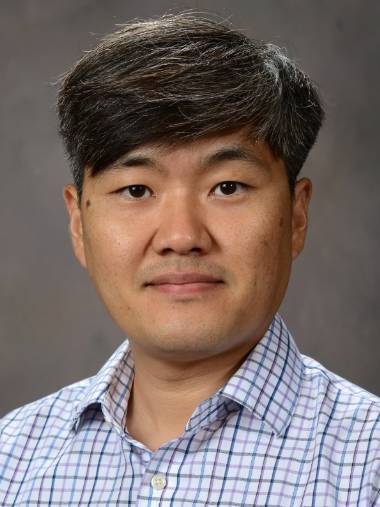LSU Biological Engineering Professor, Team Create Advanced Wound-Healing Technology
 July 10, 2023
July 10, 2023
BATON ROUGE, LA – A new means of wound-healing technology could be available to surgeons and patients in the near future thanks to a team of researchers from LSU Biological Engineering, Texas Children’s Hospital and Baylor College of Medicine, and Inha University in the Republic of Korea.
By injecting a lignin composite made of two types of nanoparticles—one is lignosulfonate, which is the byproduct of wood pulp production using sulfite pulping, and the other is lignosulfonate including calcium peroxide—at the site of the wound, researchers were able to enhance the rate of tissue granulation, the formation of blood vessels, and the infiltration of smooth muscle actin fibroblasts over the course of seven days. At 28 days after surgery, the lignin composite remodeled the collagen architecture, resembling the basket-weave pattern of unwounded collagen with minimal scar formation.
In short, the wound was healed with minimal scarring.
“Our hypothesis is that the dual function of the lignin composite—antioxidation and enhanced vascularization with locoregional supply of oxygen—will significantly improve the rate and fate of wound healing,” said LSU Biological Engineering Assistant Professor Philip Jung, principal investigator on the project. “The process is rather simple. Just one injection of the pre-cursor to the [wound site] and crosslinked with [ultraviolet light] for 30 seconds.
“In our experiments, we applied [transparent film dressing] after UV crosslinking. Then, we just waited. A surgeon doesn’t need to suture these [wounds]. Since the lignin composites are also subject to degradation after two weeks or so, the lignin composite doesn’t need to be removed via secondary surgery.”
Currently, Jung and the team are working through the commercialization process with LSU’s Office of Innovation & Ecosystem Development with the goal of making this technology as widely available as possible. They are also seeking funding from the National Institutes of Health to further the project and conduct undergraduate student training in tissue engineering for educational and workforce development purposes.
“The ultimate goal is to help patients suffering from this disease, and we will push this forward to clinical trials,” Jung said. “Even though we cannot completely fix it sooner, we want to deliver this to patients to alleviate their pain and suffering to any extent. Occasionally, I remind my students that our project is not just a research project but also potentially [one that is] influencing therapeutics for those suffering from wound-healing issues every day.”
About the LSU Office of Innovation & Ecosystem Development
The Office of Innovation & Ecosystem Development works with the university research community to facilitate the evaluation, protection, and licensing of intellectual property created at LSU. This work maximizes the university’s impact on the intellectual, economic, and social development of Louisiana and beyond. LSU IED’s mission is to advance innovation by serving faculty, supporting the research enterprise, and partnering with entrepreneurs and businesses to commercialize inventions that enhance the economy and benefit the public. To learn more about this and other technologies available for licensing from the IED, visit the LSU IED website. In addition, connect with LSU IED thru LinkedIn by clicking here.
Like us on Facebook (@lsuengineering) or follow us on Twitter and Instagram (@lsuengineering).
###
Contact: Joshua Duplechain
Director of Communications
225-578-5706
josh@lsu.edu